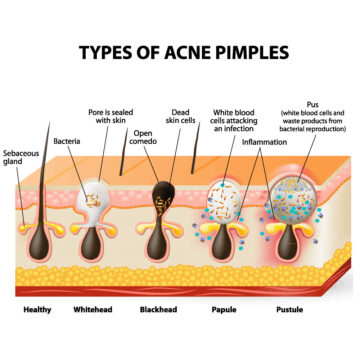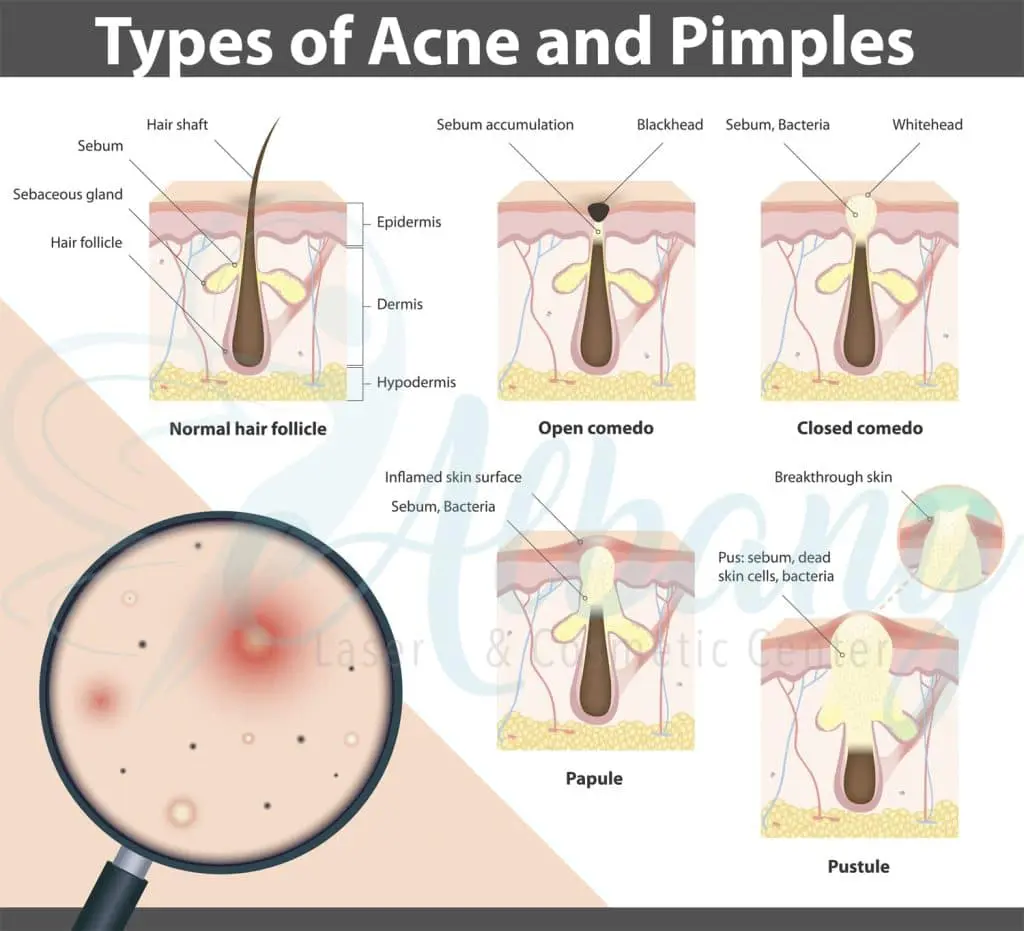Whiteheads
Also known as closed comedones, whiteheads are small, flesh-colored papules. They form when oil and skin cells block the hair follicle.
Blackheads
Known as open comedones, blackheads are small black or dark-colored spots that appear on the skin due to a clogged hair follicles.
Papules
Papules are small, raised, and red bumps that can be tender to the touch. They occur when hair follicles become inflamed or infected.
Pustules
Pustules are similar to papules, but they contain pus. They appear as small red pimples with a white center.
Nodules
Nodules are larger, inflamed lumps situated deeper within the skin. They result from the buildup of secretions deep within hair follicles.
Cystic Lesions
Painful, pus-filled lumps beneath the skin’s surface, known as cysts, form due to infections deep within the follicles.

